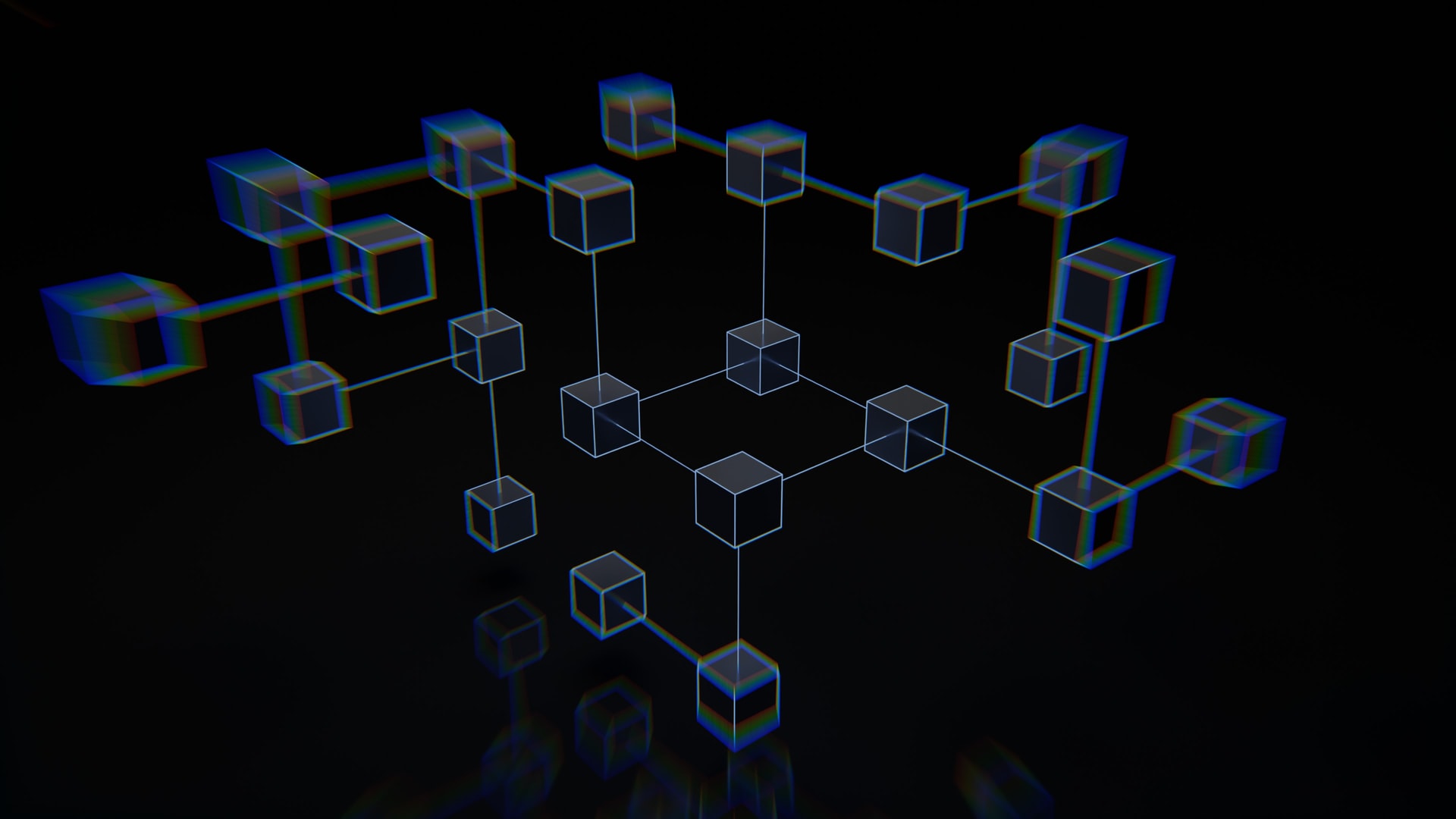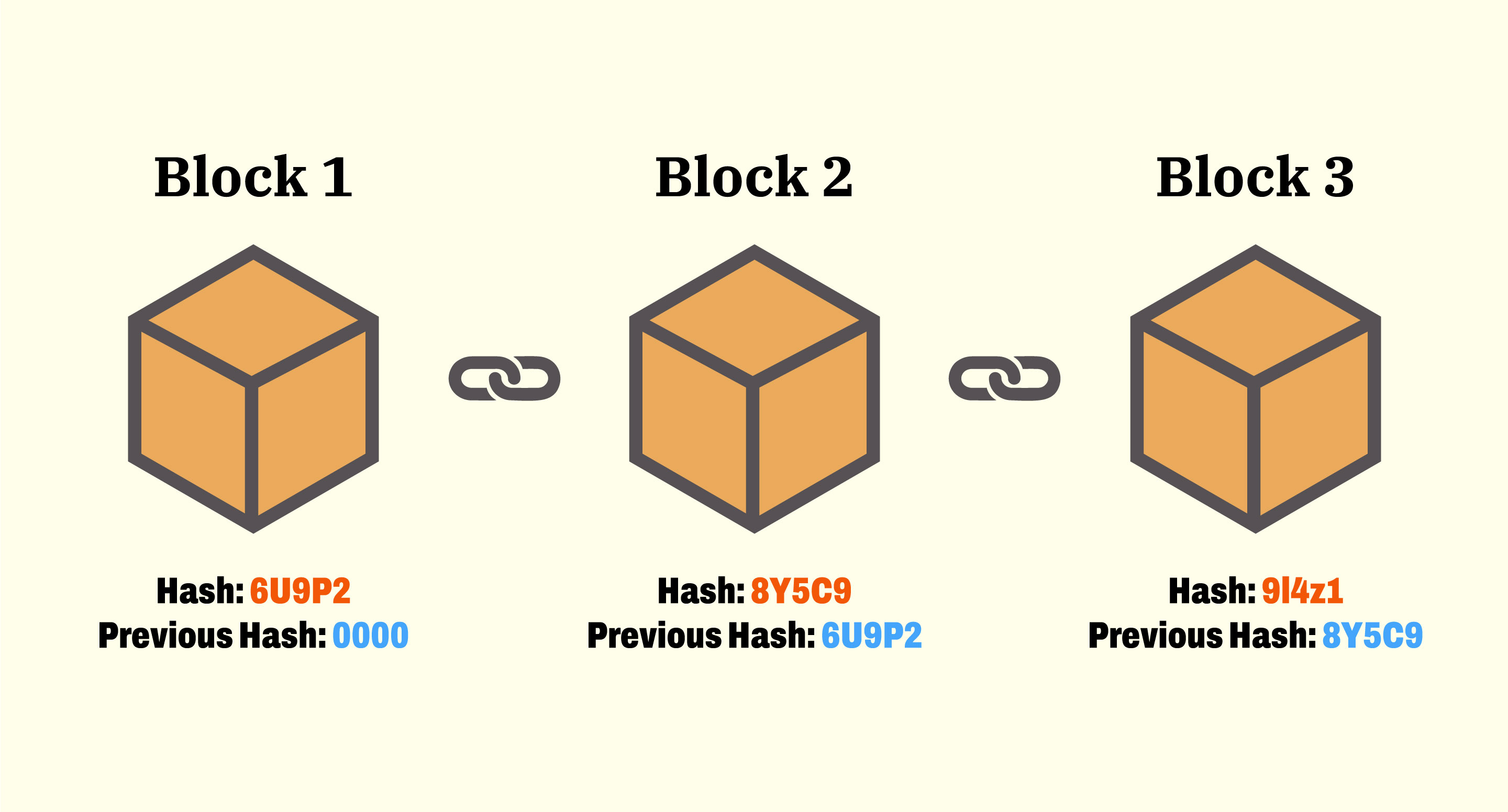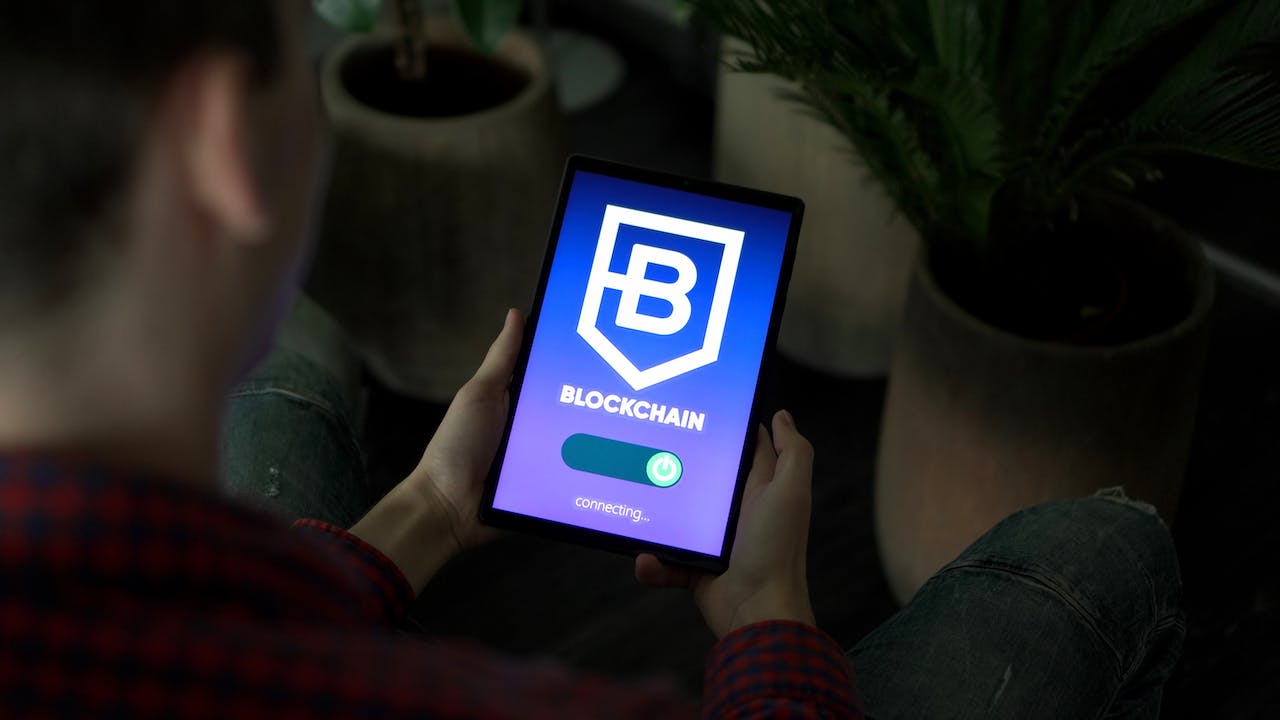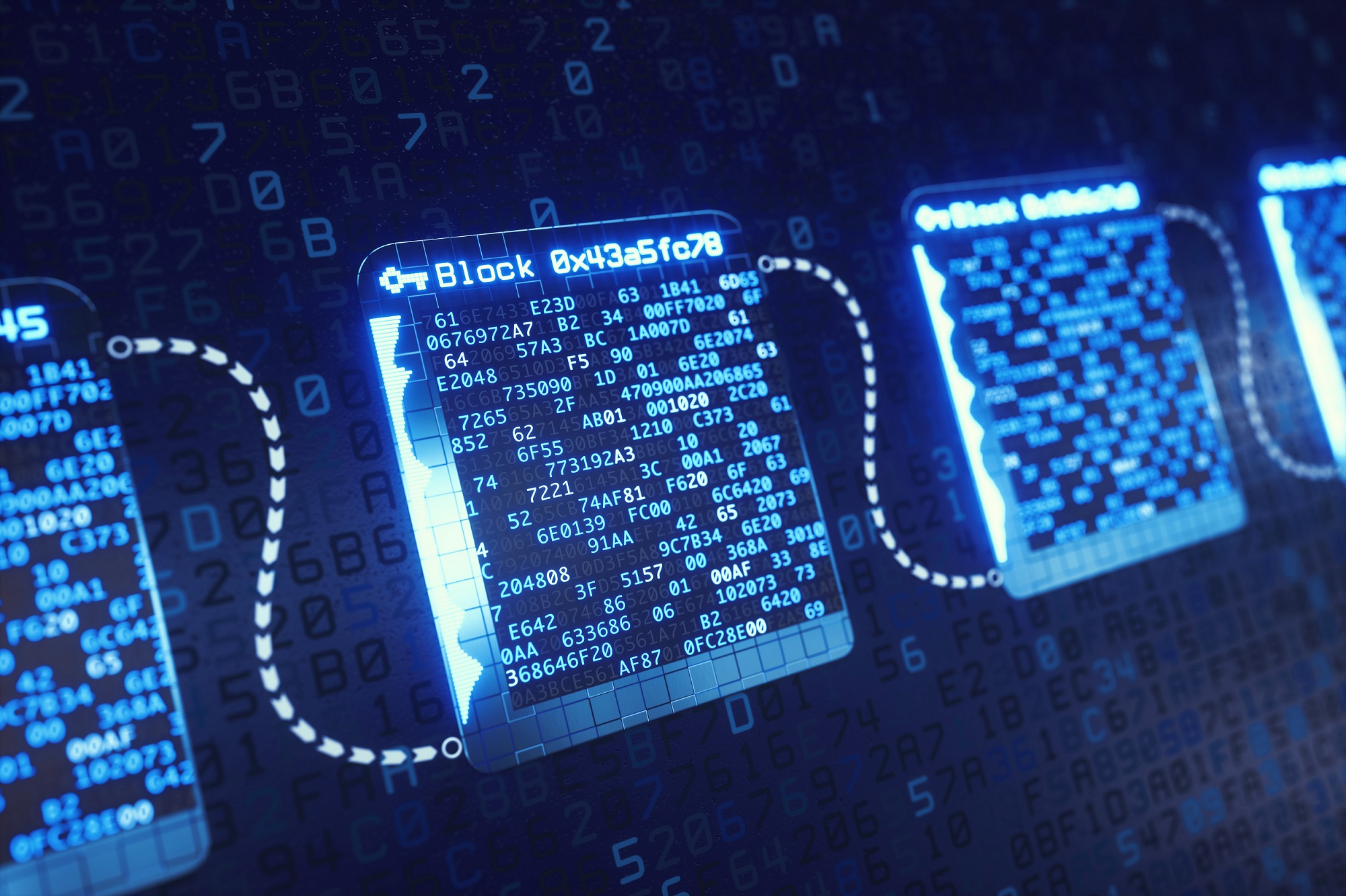Blockchain And Data Security - Its Working And Use Cases
Blockchain and data security, a symbiotic duo reshaping the contours of digital trust, offer a revolutionary paradigm for securing information.
Author:Stefano MclaughlinReviewer:Camilo WoodFeb 22, 20242K Shares26.8K Views
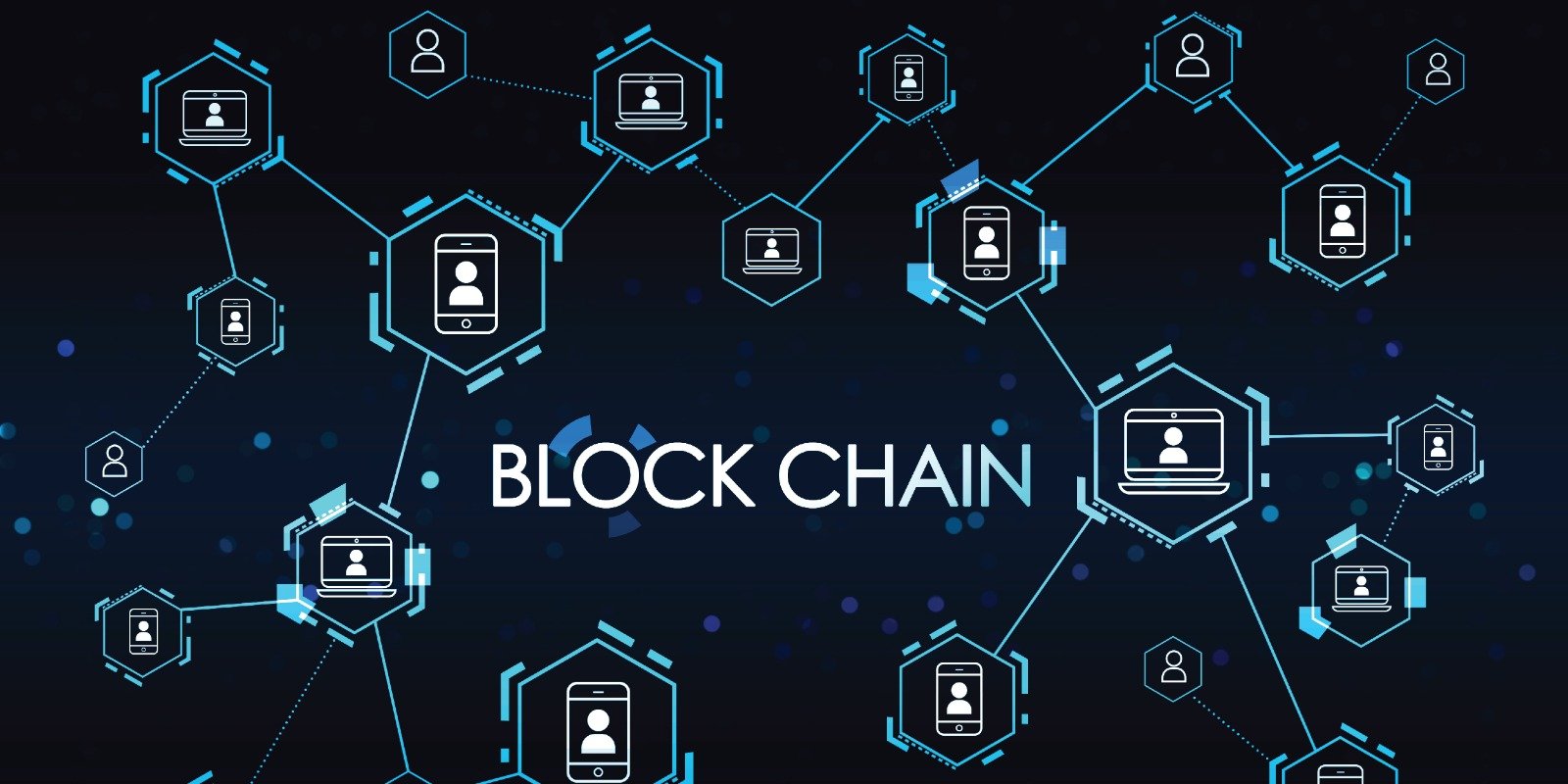
These days, digital information is becoming more valuable and easier for hackers to steal. Even though cybersecurity is now an important part of our lives, there are still holes that thieves can use.
As technology changes, so do the ways we need to keep our information safe and stop cybercrime. One new technology that can be used to make data safer and boost protection is blockchain technology. We'll talk about Blockchain and data security.
How Does Blockchain Resolve Data Privacy And Security Issues For Businesses?
Blockchain helps businesses with their data security and privacy problems in some ways:
- Decentralization - On the other hand, blockchain is based on a decentralized network of computers called nodes. Every node has a copy of the whole blockchain, and they all work together to make sure that transactions are valid and to record them. This decentralized design gets rid of the single point of failure that exists in centralized systems. This makes it very hard for bad people to change or compromise the data.
- Encryption- Public-key cryptography is used by blockchain networks to verify users and secure data. These are called "public keys" and "private keys," and each person has two of them. The private key can be used to get back data that has been encrypted with the public key. This layer of encryption makes sure that only people who are allowed to see and change the data are saved on the blockchain. This makes the data more private and safe.
- Transparency- The data on the blockchain is encrypted, but the transfers can be seen by anyone. This means that everyone on the network can see what events are going on here. This openness helps make sure that all deals are real and lowers the chance of fraud.
- Immutability - The data that is added to the blockchain can't be changed or messed with after it has been added. The data in each block and the hash of the block before it are used to create a unique cipher hash. If you tried to change the data in a block, its hash would also change, which would make the whole chain useless.
- Smart Contracts- Smart contracts are self-executing contracts that are stored on the blockchain. They use computers to check and carry out transactions. This lowers the chance of mistakes and makes sure that all transactions are carried out correctly and safely.
How Can We Use Blockchain To Bolster Cybersecurity Efforts?
Improved Identity Management
Blockchain, an autonomous, unchangeable way to store and verify identities, could completely change how identities are managed. Identity theft and scams would not be possible because each user would have a unique cryptographic identity.
Blockchain lets people control who sees their information and lets approved people see it when they need to. This decentralized approach makes security better by lowering the number of weak centralized databases and single points of failure.
Enhanced Security Protocols
To keep data safe, blockchain uses cryptographic hashing and agreement methods. Businesses can keep data safe while it's being sent and stored with these features.
Smart contracts can be used to handle security processes, which gets rid of mistakes and breaches made by people. Because blockchain is public, security can be monitored and audited in real-time, which makes the internet more secure.
Improved Transparency
The unchangeable record in blockchain makes cybersecurity events easier to see. Every change to the blockchain is recorded and time-stamped, creating a trail that can be checked.
Stakeholders can check the quality and trustworthiness of data in real-time thanks to transparency, which boosts trust. More openness can stop people from being mean by making any attempt to change the blockchain clear, which improves security.
Reduced Costs
Using protection solutions based on blockchain can save money in some ways. Getting rid of middlemen and streamlining processes can lower the costs of traditional cybersecurity. Decentralized blockchain gets rid of the need for expensive equipment and services from third parties, which lowers costs related to running the network.
Also, if you take more security measures to stop data breaches and cyberattacks, you may be able to lower the costs of damages and fines from regulators, which will eventually lower the overall cost of cybersecurity efforts.
Blockchain Technology Can Enhance Data Transparency
One of the biggest problems with the normal ways of sharing data is that we can't be sure of what's going on while we share it.
There is no way to guarantee openness, even though some ways of sharing data may be safe. The way blockchain is set up makes it possible to make sure that everything is clear and safe at the same time. Parts of this method that make it work perfectly are:
Data Distribution
Blockchain gets rid of the need for a central authority or middleman by setting up a peer-to-peer network that shares information among all users.
There is a ledger with all the data transfers, and each participant has a copy of it. This makes sure that everyone has access to the same information and can check that it is real.
Data Traceability
Blockchain creates a shared ledger that keeps track of all the events that happen with data. A hash links each transaction to the one that came before it and records the time it happened.
This sets up a series of events that make up the data's history. To make sure that everyone can find out where the data came from and where it's going, it is encrypted.
Digital Signature
We've already talked about how digital signatures can help protect data. Here, we'll look at how they also help make sure that information is clear.
To do this, they make sure that the owner and user of the information are who they say they are. It was made sure that no one else could see the shared material.
Smart Contract
Smart contracts are deals that are written on the Blockchain and run themselves. They set the rules for sharing data and make sure that everyone follows them.
Once a smart contract is put into action, it can't be changed. This makes them very reliable and clear.
Organizations That Use Blockchain For Data Sharing
Some organizations are already using blockchain technology to share information while keeping it clean and safe. Our goal is to talk about how well it worked for them and whether other people will do the same thing in the coming months and years.
IBM
IBM is one of the world's largest Supply Chain companies and has always been on the cutting edge of using new technologies in its work. Blockchain is used by IBM to provide a safe and open way for its supply chain partners to share data. In other words, it has worked better and been more effective than usual.
UNICeF
UNICEF uses Blockchain to keep track of and make sure that donations and humanitarian help get to the right places. People who do charity work may be viewed with suspicion if their activities are not open and clear. UNICEF is using Blockchain to make its operations as open and clear as possible.
Walmart
One of the most well-known names in the world is Walmart. A lot of the time, these brands need stricter rules and better tracking of their goods to make sure the supply chain works perfectly.
So, Blockchain is used to track where food comes from and how good it is. This makes sure that no one working in the line of duty is doing anything bad and that goods are shipped and brought on time.
Some Challenges To Data Sharing Using Blockchain
Technical Challenges
Blockchain, on the other hand, has much better technology than the other methods that are used.
There are still big problems with it, like how to connect different Blockchains, how expensive it is to share data, and how new security threats are appearing on the Blockchain. Even though these problems are very small compared to other systems, they can still make companies that want to switch systems think a lot.
Organizational Challenges
Blockchain has problems with how it is organized, including issues of society, education, and government.
Management means setting rules and policies for network users and making sure they are followed. It also means creating a very different attitude on Blockchain platforms.
Regulatory Challenges
There is still a lot of doubt about blockchain among regulatory officials for the same reasons that big companies around the world are thinking about it.
Its main features give customers safety and openness, but the government finds it hard to control because they see it as a way for criminals to do bad things without being seen.
Future Trends In Blockchain-Based Data Sharing
Blockchain is not going away, that's for sure. The blockchain system is always changing and getting better, which opens up new ways to share data. These are some of the trends:
Hybrid Blockchain
A mixed Blockchain takes the best parts of both public and private Blockchains and puts them together. Public blockchains are open to everyone, while private blockchains are closed, and only certain people can view them. Different groups of people can safely share data using hybrid blockchains based on their roles and permissions.
Decentralized Applications
A lot of people already use decentralized apps. Users and devices can share data using decentralized apps, which makes it possible for new services and features to be made. Decentralized apps can also use smart contracts and coins to automate data transfers and give users a reason to share data.
Blockchain Analytics
Blockchain analytics gets data from a Blockchain network, analyzes it, and shows it visually. Tracking data flows, measuring data quality, finding data patterns, finding outliers, and coming up with insights are some of the ways that blockchain analytics can help businesses keep an eye on and improve their data-sharing activities.
Frequently Asked Questions
Can Blockchain Be Used To Protect Data?
Yes, blockchain can be used to protect data through its decentralized and immutable nature.
How Does Blockchain Impact Information Security?
Blockchain enhances information security by providing transparency, immutability, and decentralization.
How Can Blockchain Be Used To Improve Security?
Blockchain improves security by offering tamper-proof records, cryptographic encryption, and decentralized consensus mechanisms.
Why Blockchain Is A Secure System For Storing Data?
Blockchain is secure for storing data due to its decentralized consensus protocol, cryptographic hashing, and immutability of recorded transactions.
Conclusion
When you store and send data, blockchain technology makes it safe and easy to see. Businesses can solve their data privacy and security problems with its decentralized structure, encryption, transparency, immutability, and smart contracts.
There will be fewer data breaches and cyberattacks as more businesses use blockchain technology. This will make the internet better and more secure in the long run. So I hope that you have understood Blockchain and data security.
Jump to
How Does Blockchain Resolve Data Privacy And Security Issues For Businesses?
How Can We Use Blockchain To Bolster Cybersecurity Efforts?
Blockchain Technology Can Enhance Data Transparency
Organizations That Use Blockchain For Data Sharing
Some Challenges To Data Sharing Using Blockchain
Future Trends In Blockchain-Based Data Sharing
Frequently Asked Questions
Conclusion

Stefano Mclaughlin
Author

Camilo Wood
Reviewer
Latest Articles
Popular Articles
